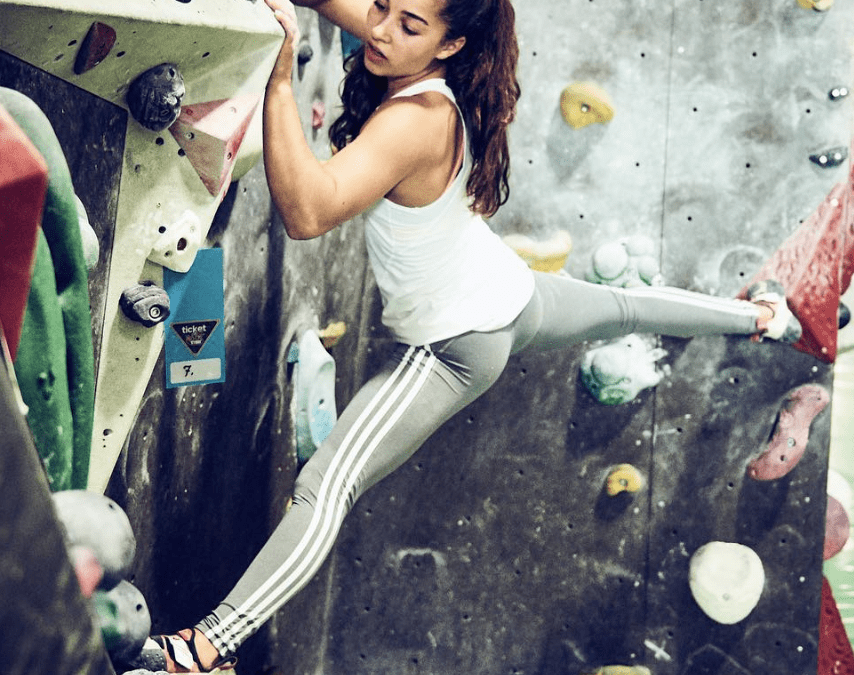Stretching for Climbing: A Beginner’s Guide
Stretching to improve flexibility in new climbers.

Flexibility is essential to the indoor climber. Though strength and conditioning are always important, flexibility is necessary for climbing hard. For shorter climbers, flexibility is even more important, as it is frequently the thing that most greatly improves a climber’s reach. Whether you are training for crags, competitions, or indoor projects, these are three invaluable stretching techniques.
The Hamstring:
As indoor climbing becomes more involved, flexibility only becomes more important. The mobility derived from flexibility gives the climber more options than they’re less flexible peers. What might have been an exceptionally challenging power-move, can quickly become a foot-first sequence that is unlocked by the climber’s stretchy hamstrings. To ensure that your hamstrings are getting stretched, sit on the floor and extend your hand as far down the length of your legs as possible. Bend at the waist, and ensure that your legs are flat against the ground as you stretch. Hold the position for 15-30 seconds and then slowly release. Repeat this process twice more.

The Hip-flexor:
The hip-flexor is often forgotten until the climber needs to high-step. Though a strong core will also help with high-steps, stretching will reduce the amount of strength required to lift the foot by reducing the muscle’s at-rest tension. There are many stretches that can target the hip-flexor, the kneeling lunge is a good place to begin. Though there is no replacing the front-split, the kneeling lunge is much more accessible. Kneel on your left leg and step forward with your right. Push the hip forward and hold for 15 seconds, rest, and repeat twice more. Do this on both sides.
Straddle splits:
The straddle split is perhaps the most useful stretch for climbing. This due to the nature of regular climbing movement. A climber’s footwork is frequently limited to high-steps and lateral foot-movements. Whether you are bouldering in a 60-degree overhang or leading a vertical wall, being able to use far away feet for stabilization can make the crux of a route significantly easier. The splits are challenging primarily due to the high degree of flexibility required to complete them. Where the hamstring stretch might only take a week or two of dedicated effort before the toes are reached, the splits will likely take more time. Patience is key. To reach the point where saddle splits are easy, begin by splitting your stance so that your legs make an inverted “V”. Bend over and place your hands on the ground. Allow your feet to slide out on either side until you reach your maximum. It is important to push yourself when you stretch, but be careful to avoid overstretching. This stretch should be approached tentatively.
Featured photo thanks to Brooke Raboutou


